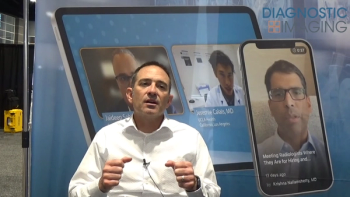
Study: MRI-Based AI Enhances Detection of Seminal Vesicle Invasion in Prostate Cancer
In a recent interview, Wayne Brisbane, M.D., discussed new research, presented at the American Urological Association (AUA) conference, which revealed a 15 percent higher AUC for an emerging AI software in detecting seminal vesicle invasion (SVI) in comparison to prostate MRI alone.
Magnetic resonance imaging (MRI) and prostate-specific membrane-antigen positron emission tomography (PSMA PET) both have limitations with respect to the detection of seminal vesicle invasion (SVI) in prostate cancer, noted Wayne Brisbane, M.D., in a recent interview.
“One of the issues is (MRI) is not super sensitive so if there's a small amount of seminal vesicle invasion, it might not be picked up, especially if the tumor volume is very small. But it's still important because we would risk adjust those patients and change their treatment paradigms,” noted Dr. Brisbane, an assistant professor of urology at the University of California-Los Angeles (UCLA). “ … With PSMA, there (are) other challenges. While molecular imaging is very easy to interpret, there is less spatial resolution between the prostate and the seminal vesicle so interpreting seminal vesicle invasion with PSMA and MRI can be challenging.”
However, in a recent lecture at the American Urological Association (AUA) Annual Meeting, Dr. Brisbane discussed key findings from a new study examining the use of the MRI-based artificial intelligence (AI) software Unfold AI (Avenda Health) for detecting SVI in patients with
In an initial cohort of 147 men who underwent radical prostatectomy (with a 17 percent incidence of SVI), the researchers found that the AI software provided 92 percent sensitivity, 89 percent specificity and a 95 percent area under the receiver operating characteristic curve (AUC), 15 percent higher than the AUC for MRI alone (80 percent).1
“(This) AI (software) was initially trained on (prostate) tumor volume but has found really impressive accuracy for predicting cancers coming out of the prostate or into the seminal vesicles,” noted Dr. Brisbane.
(Editor’s note: For related content, see “
For more insights from Dr. Brisbane, watch the video below.
Reference
1. Brisbane W, Priester A, Mota SM, et al. Prediction of seminal vesicle invasion using artificial intelligence prostate cancer risk mapping. J Urology. 2025 May 1.
Newsletter
Stay at the forefront of radiology with the Diagnostic Imaging newsletter, delivering the latest news, clinical insights, and imaging advancements for today’s radiologists.




























